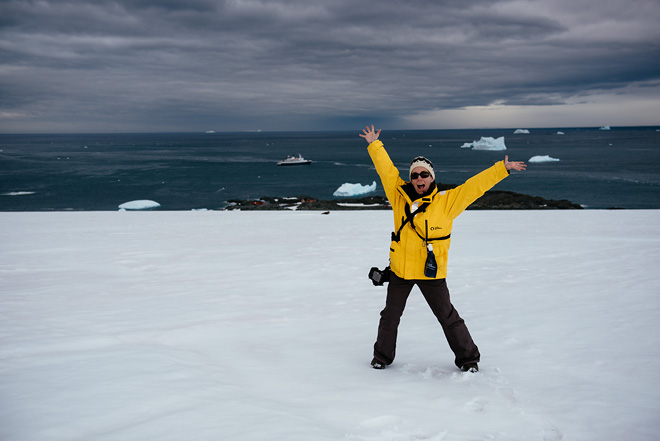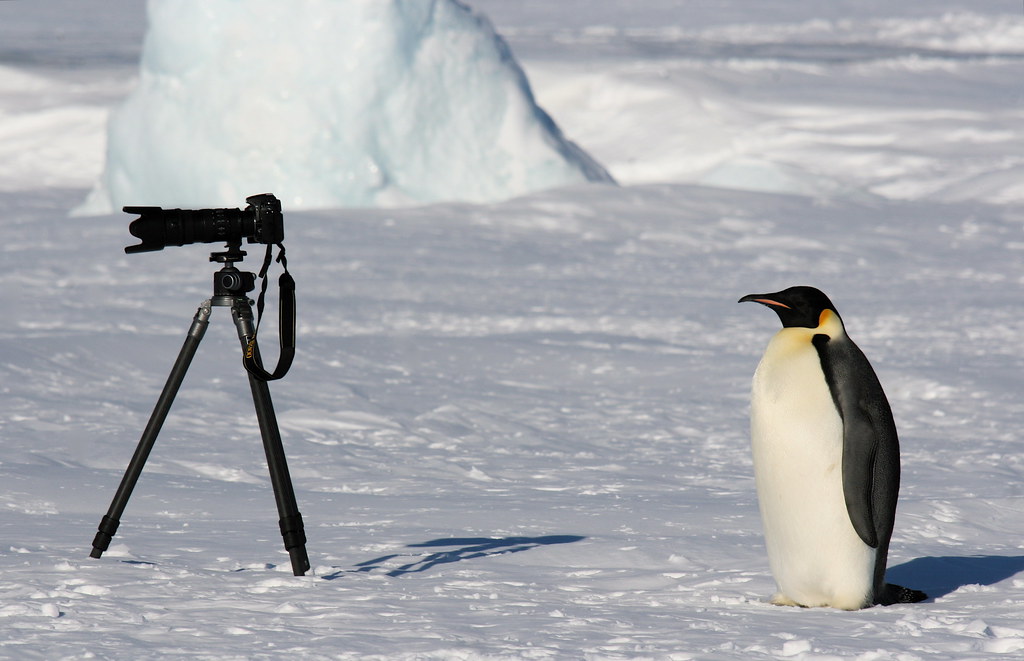This is as good a time as any to talk about the camera gear that I brought with me. Taking photos is a huge part of my enjoyment of an experience and one of the things I most looked forward to about this trip.
So here’s what I brought with me and how I used it.
Nikon D750
Nikon D600
16-35mm f/4.0
35mm f/1.4
24-70mm f/2.8
80-400mm f/4.5-5.6
Fuji x100s
spare batteries
charger
rain covers
dry bags
polarizing filter
SD cards
Macbook Air
2x portable hard drives
microfiber lens cleaning cloths
2x Black Rapid straps
This setup worked pretty well. For landings, I put the long lens on one and used a wide-angle on the other one. I switched it up between the super-wide and the 24-70mm for the wide one. The 35mm f/1.4 (which is one of my most used lenses, generally) I used only inside the ship, and before and after the trip.
To carry them to land, I put each camera + lens combo inside a dry bag, then put the dry bags in my backpack. I wore my two camera straps (which are cross-body straps) over my parka, then put on my lifejacket, then my backpack. On the zodiacs, you had to remove your backpack and keep it at your feet. Once on land, I’d take the cameras out of the dry bags and hook them onto my straps, and I was ready to shoot.

Me wearing two cameras on Carvajal. You can see one camera and two straps; the second camera was being used to take the photo.
What I would do differently: I wish I’d brought a small waterproof point-and-shoot camera. (I was looking at the Nikon 1 AW1 before we left, but didn’t buy it.) Partly for taking pics on the zodiacs–where you were very likely to get spray or even full on splashes except on the very specific zodiac cruises, where you were moving slower and the whole point was to take photos. But for going to/from shore, we sometimes went through some amazing ice, and I generally didn’t want to risk getting the camera wet. (I did take it out a couple of times, but I also got completely drenched one day from behind–not while I had a camera out–and I was like, well, I guess that’s why you wear waterproof clothes! The splash hit me and went over my head onto the people across from me. So mostly it was too risky, I felt.) (Someone asked Alex, the expedition leader, before our first landing, “How waterproof do our backpacks need to be?” and he said, “As far as I’m concerned, it either IS or it ISN’T waterproof.” LOL.)
Also I wish I’d had a waterproof camera just for taking photos of immediately before/after loading and unloading. Because I like to document everything. And I did manage to get some photos of these moments a couple of times, but it would’ve been easier if I’d had a little camera that I could just slip into a pocket and not have to worry about keeping dry. (Because my Nikons were each in their own dry bag inside my backpack for zodiac rides, and the loading area was too small and cramped and things happened too fast to try to shoot and then put it away before it was my turn to load.)
I wiped them down with a damp washcloth several times, because they did both get a lot of spray at a few points. I had plastic rain covers for them, which worked ok. I used them in snow/light rain and during the hurricane when I was shooting on deck even though I could barely remain standing up.
I always had spare batteries in an inside fleece pocket (to keep them warm) but I never had any problems with cold draining the batteries. Probably b/c it wasn’t actually that cold.
I expected to see lots of amazing camera gear on this trip, but amazingly, only a few other people had DSLRs with pro lenses. People joked about the fact that I carried two cameras. And the first time I busted out the 80-400mm, as we sailed through the Beagle Channel out of Ushuaia, someone joked, “She wants to be the first one to photograph Antarctica.” HA!
But I’ll also say that you didn’t need DSLRs and pro lenses to get amazing photos. Sometimes I looked at the awesome photos people were getting from their tiny p&s cameras and I was like, “Why am I lugging all this around again??” But all in all I was happy with my setup.
